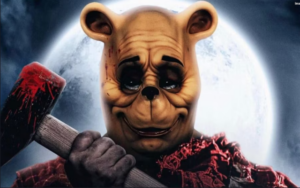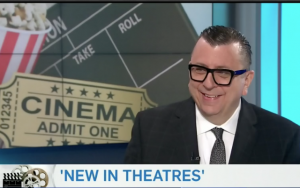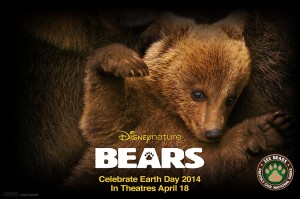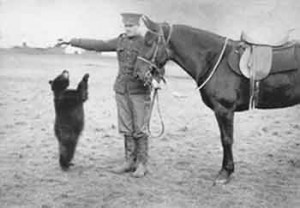CTV NATIONAL NEWS: Winnie the Pooh stars in R-rated slasher movie
 I join CTV National News reporter John Vennavally-Rao to look at the new microbudget R-rated horror film “Winnie the Pooh: Blood and Honey.”
I join CTV National News reporter John Vennavally-Rao to look at the new microbudget R-rated horror film “Winnie the Pooh: Blood and Honey.”
Watch the whole thing HERE!
 I join CTV National News reporter John Vennavally-Rao to look at the new microbudget R-rated horror film “Winnie the Pooh: Blood and Honey.”
I join CTV National News reporter John Vennavally-Rao to look at the new microbudget R-rated horror film “Winnie the Pooh: Blood and Honey.”
Watch the whole thing HERE!
 Richard joins CP24 anchor Nick Dixon to have a look at the weekend’s new movies including “Christopher Robin,” the wannabe spy comedy “The Spy Who Dumped Me” and two documentaries, “Scotty and the Secret History of Hollywood” and “McQueen,” the story of fashion designer Alexander McQueen.
Richard joins CP24 anchor Nick Dixon to have a look at the weekend’s new movies including “Christopher Robin,” the wannabe spy comedy “The Spy Who Dumped Me” and two documentaries, “Scotty and the Secret History of Hollywood” and “McQueen,” the story of fashion designer Alexander McQueen.
Watch the whole thing HERE!
 Richard sits in with CTV NewsChannel anchor Marcia MacMillan to have a look at the weekend’s big releases, the adult adventures of Winnie the Pooh in “Christopher Robin,” the wannabe spy comedy “The Spy Who Dumped Me” and two documentaries, “Scotty and the Secret History of Hollywood” and “McQueen,” the story of fashion designer Alexander McQueen.
Richard sits in with CTV NewsChannel anchor Marcia MacMillan to have a look at the weekend’s big releases, the adult adventures of Winnie the Pooh in “Christopher Robin,” the wannabe spy comedy “The Spy Who Dumped Me” and two documentaries, “Scotty and the Secret History of Hollywood” and “McQueen,” the story of fashion designer Alexander McQueen.
Watch the whole thing HERE!
 A weekly feature from from ctvnews.ca! The Crouse Review is a quick, hot take on the weekend’s biggest movies! This week Richard looks at the adult adventures of Winnie the Pooh in “Christopher Robin,” the wannabe spy comedy “The Spy Who Dumped Me” and “McQueen,” the story of fashion designer Alexander McQueen.
A weekly feature from from ctvnews.ca! The Crouse Review is a quick, hot take on the weekend’s biggest movies! This week Richard looks at the adult adventures of Winnie the Pooh in “Christopher Robin,” the wannabe spy comedy “The Spy Who Dumped Me” and “McQueen,” the story of fashion designer Alexander McQueen.
Watch the whole thing HERE!
 “Don’t go getting all grown up on us.“ That’s the sentiment that hangs over “Christopher Robin,” a new film about regaining an intangible starring Ewan McGregor and Winnie the Pooh (voice of Jim Cummings), like a shroud.
“Don’t go getting all grown up on us.“ That’s the sentiment that hangs over “Christopher Robin,” a new film about regaining an intangible starring Ewan McGregor and Winnie the Pooh (voice of Jim Cummings), like a shroud.
The movie begins with 10-year-old Christopher Robin‘s going away party, just before he leaves for boarding school. His playmates, Piglet (voice of Nick Mohammed), Eeyore (Brad Garrett), Tigger (Cummings again), Owl (Toby Jones), Rabbit (Peter Capaldi), Kanga (Sophie Okonedo) and the honey loving bear have gathered to see him off from 100 Acre Woods, their home and Christopher’s escape from real life.
“I will never forget you Pooh,“ Christopher says, “even if I live to be 100 years old.“
But of course he does.
Like the quickly flipped pages of a story park the film rockets through Christopher’s boarding school, marriage, efforts in WWII and his difficulties after the war. Now a husband to Evelyn (Hayley Atwell) and a father to Madeline (Bronte Carmichael), he has a job he doesn’t like and responsibilities that keep him away from his family.
Christopher Robin got all grown up.
When his boss instructs him to cut 20% of his operating budget Christopher is pushed against the wall. The frivolities of youth are pushed even further to the background until Pooh, looking for his friends and in search of honey, shows up in London with the grumbling tummy and some sage words of advice. “I’ve cracked,” says Christopher when his childhood friend shows up. “I’ve totally cracked. “I don’t see any cracks,” replies Pooh sweetly, “some wrinkles maybe.”
A mix of live action and CGI characters, “Christopher Robin” doesn’t allow the special effects to get in the way of the film’s message of staying young at heart. The stuffed animals—Winnie and friends—don’t feel like and excuse to sell toys. Instead they are given distinct and engaging personalities that move the story and the message forward. Cummings, who has voiced Winnie since 1988, brings real personality to the character, imbuing his elliptical speaking patterns with equal parts humour and melancholy. Pooh also causes some Paddington-style chaos in the Robin household, adding to the slapstick factor in a movie that toggles between heartfelt and farce.
There is an undeniable sense of loss and longing in “Christopher Robin.” Loss, in the form of a childhood innocence gone missing—“I’m lost,” says Pooh, “but I found you.”—longing in the efforts made to regain the connection to childlike wonder and, in Robin’s case, his own daughter Madeline. Children might not get it, although I’m sure they will enjoy the stuffed characters, but adults will understand the curious tale about the importance of old friends and embracing the inner child.
 Richard sits in on the CJAD Montreal morning show with host Andrew Carter to talk about the adult adventures of Winnie the Pooh in “Christopher Robin,” the wannabe spy comedy “The Spy Who Dumped Me” and two documentaries, “Scotty and the Secret History of Hollywood” and “McQueen,” the story of fashion designer Alexander McQueen.
Richard sits in on the CJAD Montreal morning show with host Andrew Carter to talk about the adult adventures of Winnie the Pooh in “Christopher Robin,” the wannabe spy comedy “The Spy Who Dumped Me” and two documentaries, “Scotty and the Secret History of Hollywood” and “McQueen,” the story of fashion designer Alexander McQueen.
Listen to the whole thing HERE!
 As anyone who watched Yogi Bear or Winnie the Pooh knows, a good chunk of a bear’s life is spent searching for food. A new Disneynature documentary, “Bears,” has an up-close-and-personal look at how real bears hunt for food in the wild, far away from Yogi’s pic-a-nics and Winnie’s honey pots.
As anyone who watched Yogi Bear or Winnie the Pooh knows, a good chunk of a bear’s life is spent searching for food. A new Disneynature documentary, “Bears,” has an up-close-and-personal look at how real bears hunt for food in the wild, far away from Yogi’s pic-a-nics and Winnie’s honey pots.
Directed by “Planet Earth” wildlife legend Alastair Fothergill (with co-director Keith Scholey), “Bears” is the result of a year long shoot, following mother Sky, and her cubs Scout and Amber as they fight the elements, wolves and a nasty outcast bear named Chinook in a quest for the “bear” necessities of life.
“Bears” integrates story with an educational point of view. Kids will learn about the bear’s migration via beautifully shot film, stunning time-lapse photography. Unfortunately a strangely conceived voice over from John C. Reilly adds a narrative that anthropomorphizes the animals, adding in an unneeded storyline that seeks to humanize these majestic creatures. Shots of the mother bear delicately eating a clam is elegant and primal, it isn’t necessary to add silly narration to give human attributes to the bears.
It’s meant to make the story more relatable, bit feels a little trite—for instance a scene of Sky and Amber ripping a writing salmon apart is described as a mother and daughter’s sushi date—for a movie with such lush wildlife photography.
In short, let the pictures do the talking. Show me, don’t tell me.
Beyond the distracting VO, “Bears” is a welcome addition to Disneynature’s wildlife canon. There is some intense circle of life stuff that may upset young animal lovers, but the bears emerge with their dignity and majesty intact and kids will learn something while being entertained.
 For most people, Walt Disney is a brand name, or a flickering black-and-white image best remembered for hosting the Disneyland series throughout the 1960s. But for animator Burny Mattinson he was a real living, breathing person.
For most people, Walt Disney is a brand name, or a flickering black-and-white image best remembered for hosting the Disneyland series throughout the 1960s. But for animator Burny Mattinson he was a real living, breathing person.
“I first met him as a traffic boy when I first came to the studio,” said Mattinson, a Disney employee since 1953. “I was in the elevator and he stepped in. I said, ‘Good morning Mr. Disney.’ He looked at me with a cocked eyebrow and said, ‘It’s Walt, son.’ That was my first adventure with him.”
Mattinson had many adventures in the studio, including working on Aladdin, Beauty & the Beast and the original Winnie the Pooh shorts in 1964 and ’74. Those shorts were wildly popular, but were originally planned as a feature film. Mattinson remembers watching the rough cut of the film with Disney.
“He came out afterwards and said, ‘You know, I think we should cut our losses. I don’t think audiences are going to like this kind of humour. It’s too mild. Let’s put it out as a featurette.’ So we cut it to 20 minutes and lost a lot of footage. We put it out as Winnie the Pooh and the Honey Tree and it did very well, and Walt said, ‘Well we have the rest of this footage, let’s put it out as A Blustery Day. Which we did and it won an Academy Award the following year.”
Recently Mattinson’s career came full circle when he was approached to help relaunch the Pooh Bear and his friends from the Hundred Acre Woods. The result is Winnie the Pooh, a movie Mattinson says, “is kind of like visiting an old friendly family you’ve grown up with.”
Mattinson has another family connection to the film. The movie’s opening moments are live action, featuring a Winnie the Pooh stuffed doll his wife made in 1964. It was set to be used in the 1964 movie, but when it wasn’t he gave it to his children.
“My kids played with it,” he says, “and their kids played with it. It’s kind of raggedy; it’s gotten a lot of patina of age on it but then when the bosses said they were going to shoot a new live action opening I brought it in and showed it to them and they said, ‘Yes! That’s it.’ It’s finally gotten its chance.”
 Winnie the Pooh has Canadian roots. The beloved A.A. Milne creation, a potbellied bear with a taste for “hunny,” was based on a real-life Canadian black bear that lived at the London Zoo.
Winnie the Pooh has Canadian roots. The beloved A.A. Milne creation, a potbellied bear with a taste for “hunny,” was based on a real-life Canadian black bear that lived at the London Zoo.
Brought to the zoo by Lieutenant Harry Colebourn during the First World War, the bear was named Winnie after the soldier’s hometown of Winnipeg.
It’s fitting, then, that the new Disney Winnie the Pooh movie had many Canadians help bring it to the screen.
“It’s like winning the lottery having worked here,” says Alberta native Brian Ferguson of his 21 years working at the House of Mouse.
His first job after joining the company was animating the company’s mascot in Mickey Mouse’s Prince and the Pauper. “It’s such a simple design,” he says, “but if you get a pencil thickness off in the proportions, it looks wrong.” That’s a lesson he took with him when drawing the classic characters in Winnie the Pooh.
“The people who did the first Winnie the Poohs were masters and the stuff they did then, wow,” he says. “Even as an experienced animator I look at it and go, ‘Oh my goodness, I wouldn’t have thought of that.’ It’s subtle little things that make a character be just a little away from normal. It’s the subtle difference between, ‘I would never have done it that way,’ to ‘I would never have thought to do it that way.’”
Nik Ranieri, a Torontonian with 23 years at the studio, adds that while the classic look of Winnie the Pooh has been maintained in the movie, efforts have been made to update the feel of the film.
“When I watch the film there are some things in there I don’t think you’d see in the old ones,” he says. “Look at the character of Rabbit. Some of those poses and expressions are a little more manic, but it doesn’t take away from the charm of the original. It just adds a little bit of contemporary feel to it.”
For Vancouverite Clio Change, Winnie the Pooh marks a landmark — it’s her first Disney film. “I think I was four when I told my dad I wanted to work here,” she says. “He said, ‘OK, you can sell Coke in the parks in a mouse suit.’ Luckily it was animation instead.”
When I ask her if all the Disney Canucks have their own table in the cafeteria she nods and laughs, “We eat maple cookies and drink syrup.”